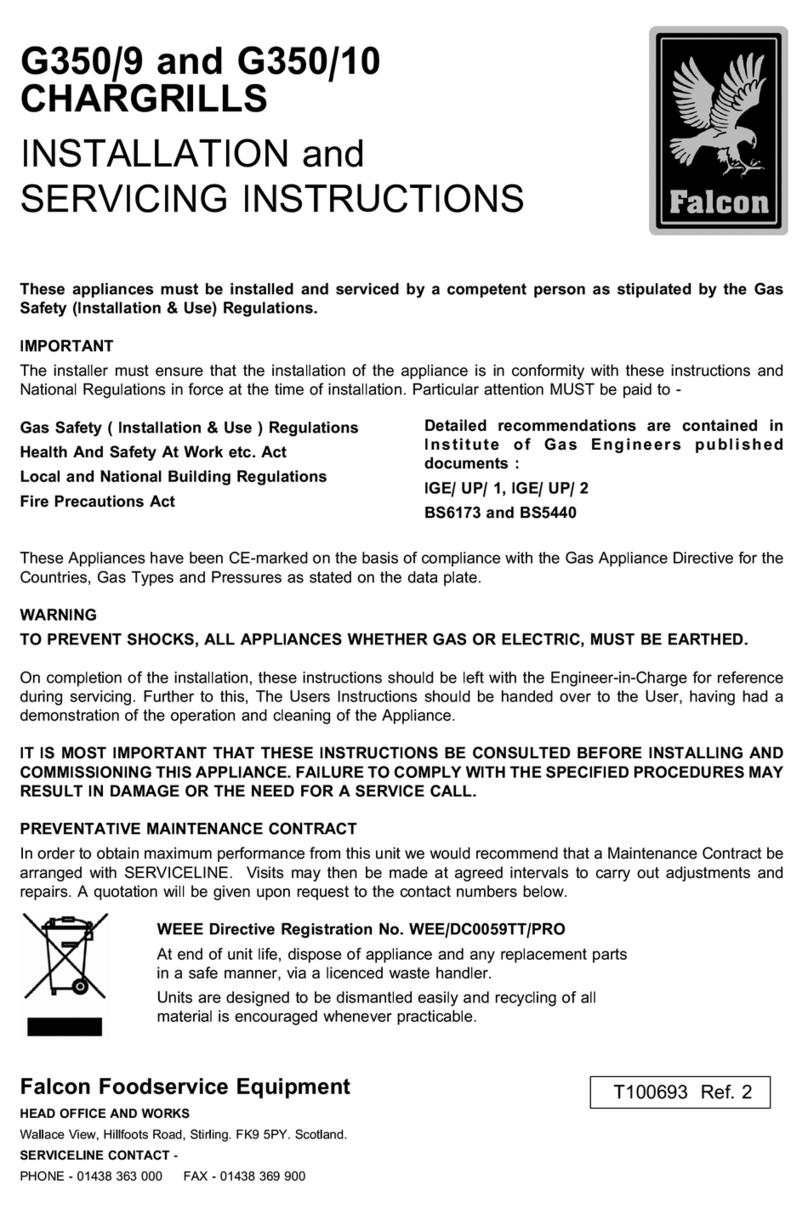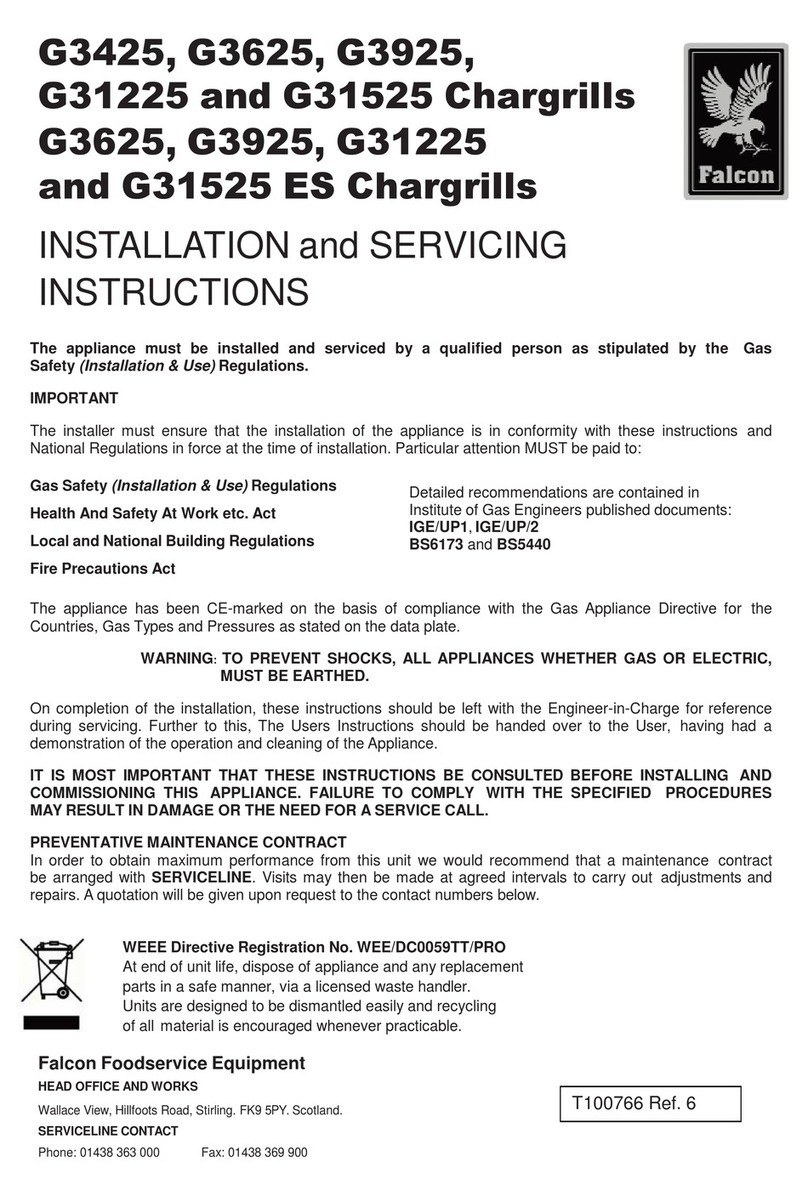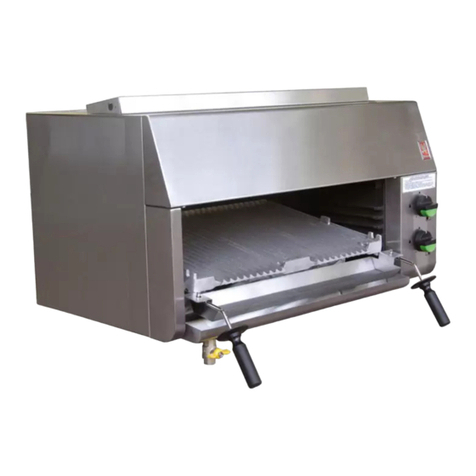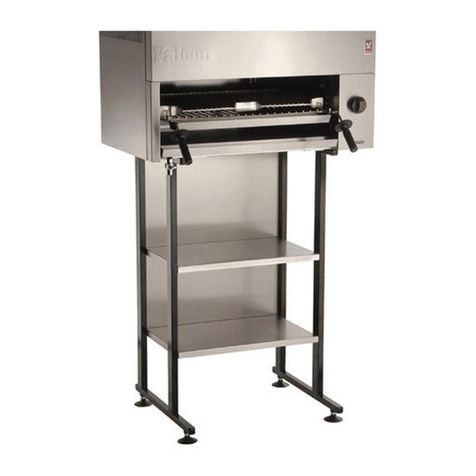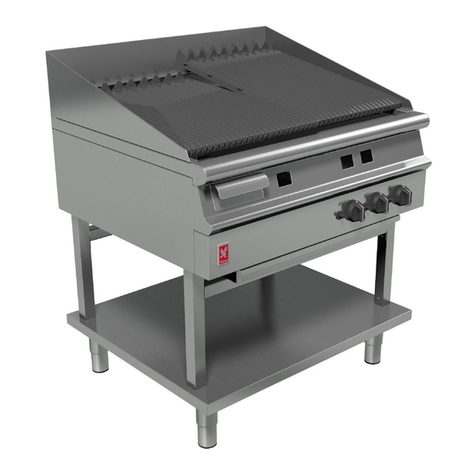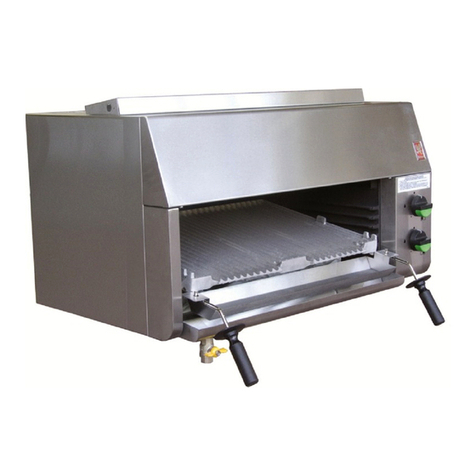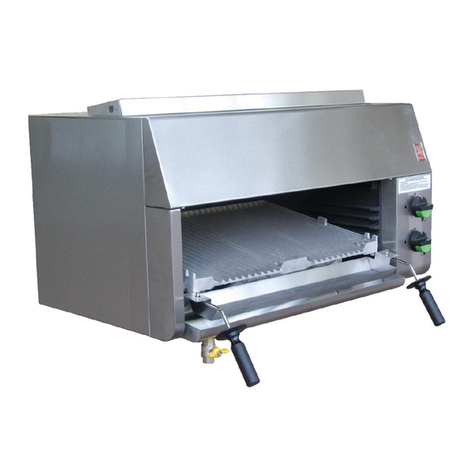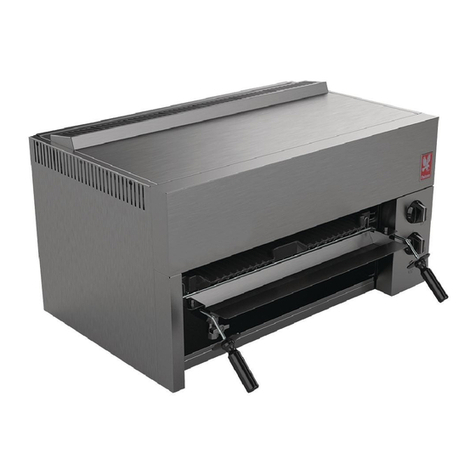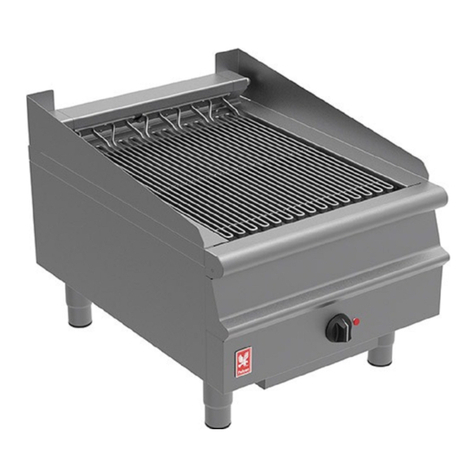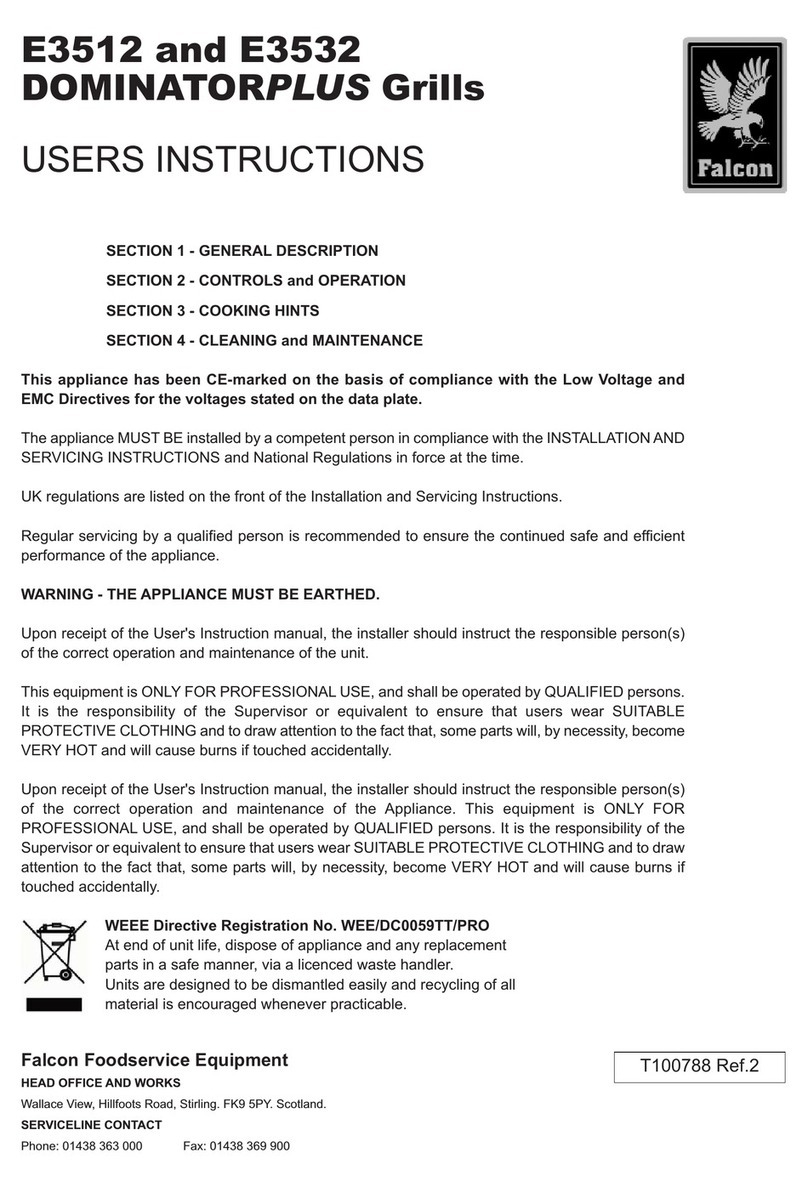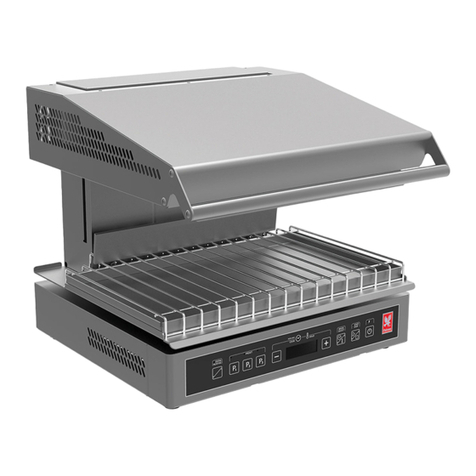SECTION 3 - COOKING HINTS
After lighting burners, allow unit to heat up for at least
30 minutes with burners full on to achieve correct
working temperature of lava rock and grid bars.
This is recognised when rock shows a red glow at
bottom, rock need not be red throughout and will be
giving off infra-red heat as required for fast cooking.
The gas can then be turned down but not more than
necessar to maintain the red glow in rock.
The temperature varies across depth of cooking grid:
The hottest area being at rear becoming
progressivel cooler toward the front, enabling rare
and well done cooking to be achieved on steaks etc.
For good cooking, correct temperature and time are
ver important. Thick cuts of meat etc, require a
longer cooking time at a lower temperature than
thinner cuts to avoid burning and should be cooked
nearer the front of the grids.
Steaks or chops should be branded on both sides to
retain their juices then cooked as required with as few
turns as possible. Rare cooking should be done at
rear of cooking area where food items will cook more
quickl on the outside. Attractive branding is
produced on food b the searing action of the hot
grid bar edges. A criss-cross pattern can be attained
b turning food through 90
o
halfwa through cooking
process.
Fats dripping from meat will flare up on rock below
and flavour cooking. A certain amount of flaring
should occur to give this desirable flavouring but
should not be allowed to become excessive when
cooking fattier meats. When excessive flaring occurs,
lower tilting handles to run off excess fat and when
flaring subsides, return brander bars to original
position.
Cooking times var considerabl according to t pe of
food, thickness and customer requirements
i.e. RARE or WELL DONE, but experience will soon
produce satisfactor results.
For example: 100g high meat content beefburgers
can be cooked in 6 minutes (3 minutes per side) and
20mm thick, good qualit steaks take from 5 minutes
(RARE) to 12 minutes (WELL DONE). These times
are not meant to be rigidl adhered to, the are for
general guidance onl .
SECTION 4 - CLEANING and MAINTENANCE
Allow unit to cool before cleaning or removing parts.
The stainless steel external bod should be cleaned
with soap water as often as possible, rinse and dr .
Brander bars should be removed for cleaning with a
wire brush dail to prevent carbonising and to keep
drain channels clear.
Burners should be cleaned at least once a week to
maintain maximum performance. To do this, it is
necessar to first remove lava rock and burner
grates. The hearth surround should be removed b
lifting it upward. Burners are removed b lifting them
out rearward to avoid damaging injectors and are
best cleaned with a wire brush to remove deposits of
lava dust and grease which ma block burner ports.
If allowed to accumulate, this will effect efficienc of
the appliance.
With hearth surround removed, the fat trough can be
lifted out and thoroughl washed, rinsed and dried.
Replacement of parts should be done in reverse
order. Ensure burners are dr and free from an
cleaning material before replacing.
Regular usage of appliance will dictate replacement
of the lava rock - approximatel ever six months.
Note
Should burner injectors become blocked, cleaning
should be carried out b an approved service
engineer.
The fat drawer should be removed, emptied and
thoroughl washed, rinsed and dried dail .
Periodic checks must be made during use to avoid
overflowing. Fat drawer should be removed b sliding
it forwards. Care should be taken in replacing fat
drawer to ensure it is pushed full backwards into
correct position.
The drip tra behind fat drawer should be removed
regularl for cleaning. The tra is removed b sliding it
forward. Care must be taken when replacing it to
ensure the handles (large spacer brackets) are at
front of unit and that the tra is pushed full backward
into correct position.




